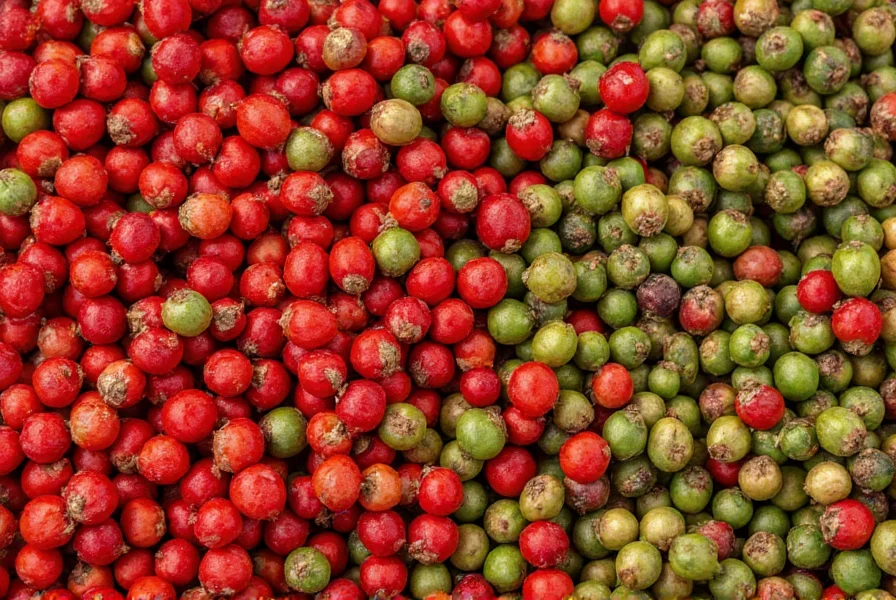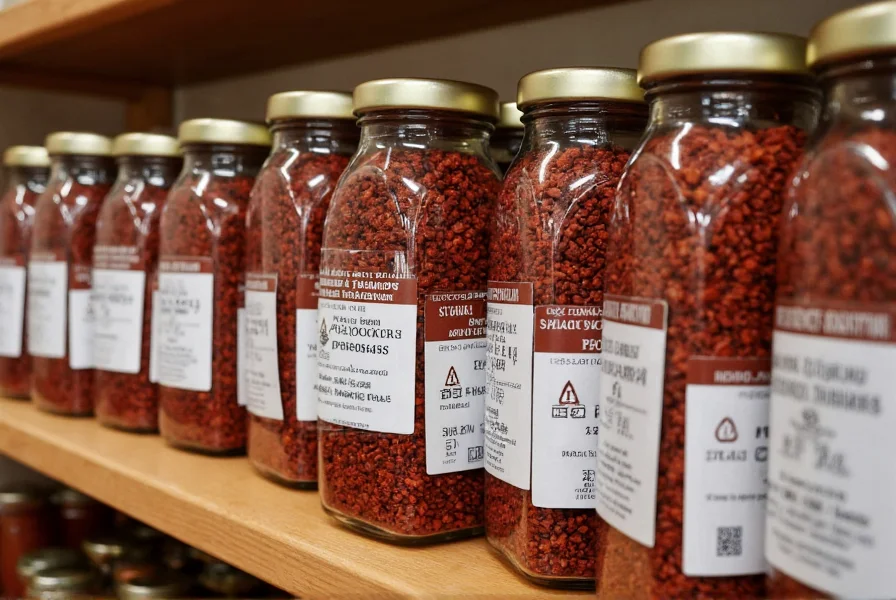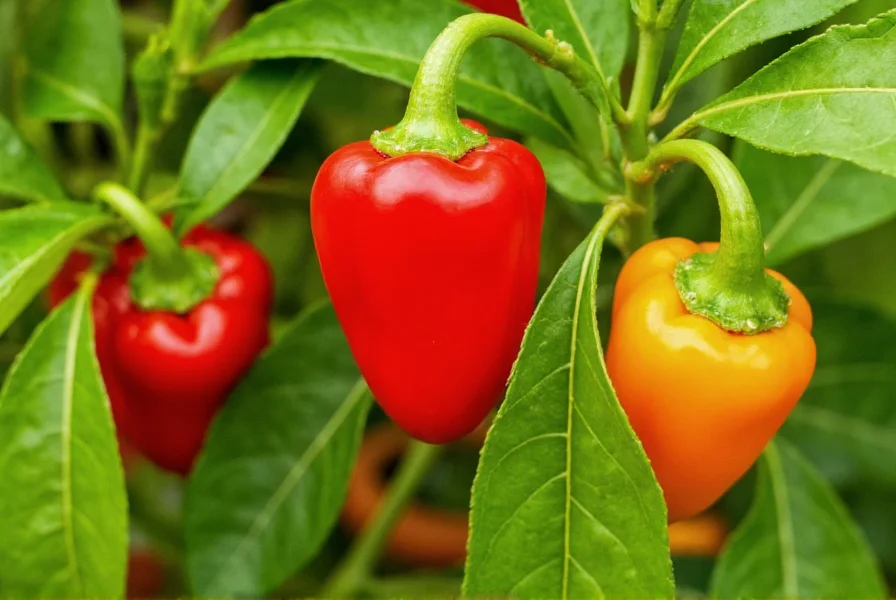Sichuan pepper, despite its misleading name, has captivated global palates with its distinctive sensory experience. This spice, fundamental to China’s culinary heritage, creates a paradoxical sensation that’s simultaneously invigorating and calming. Understanding its properties transforms how home cooks and chefs approach Asian-inspired dishes.
What Exactly Is Sichuan Pepper?
Botanically classified under the Zanthoxylum genus, Sichuan pepper belongs to the citrus family—not the Piper nigrum species of black and white pepper. The two primary varieties are:
| Variety | Origin | Flavor Profile | Best Uses |
|---|---|---|---|
| Red Sichuan Pepper | Sichuan province, China | Earthy, woody, pronounced numbing effect | Classic Mapo Tofu, Kung Pao dishes |
| Green Sichuan Pepper | Taibai Mountain region | Fresher, more floral, milder tingling sensation | Seafood dishes, modern fusion cuisine |
The confusion with black pepper stems from historical European trade routes where all pungent spices were labeled ‘pepper.’ This misnomer persists despite their completely different botanical origins and sensory experiences.

The Science Behind the Tingling Sensation
The signature ‘ma’ (numbing) effect comes from hydroxy-alpha-sanshool, a compound that activates touch receptors rather than pain receptors like capsaicin in chili peppers. This creates:
- A vibrating sensation at 50 Hz frequency, similar to mild electrical stimulation
- Temporary desensitization of taste buds, enhancing subsequent flavors
- No actual heat measurement on the Scoville scale
Recent studies published in Proceedings of the National Academy of Sciences reveal that sanshool compounds trick nerve endings into perceiving vibration, explaining why the sensation feels like ‘buzzing’ rather than burning.
Proper Usage Techniques for Maximum Flavor
Improper handling diminishes Sichuan pepper’s complex profile. Professional chefs recommend:
- Dry-toasting first: Heat whole peppercorns in a dry skillet over medium-low heat for 2-3 minutes until fragrant
- Grind just before use: Essential oils dissipate quickly; pre-ground versions lose 60% of aromatic compounds within weeks
- Temperature control: Add during the last 2 minutes of cooking to preserve volatile compounds
- Balance with chili: The numbing effect amplifies perceived heat, so reduce chili quantities by 25% when using both
For authentic Sichuan dishes like shuizhu (boiled fish), chefs create a ‘flavor base’ by frying peppercorns with dried chilies in oil, then straining the solids to infuse the oil with flavor without overwhelming texture.
Storage Methods That Preserve Freshness
Sichuan pepper degrades faster than most spices due to its volatile essential oils. Follow these storage guidelines:
- Store whole peppercorns in airtight containers away from light and heat
- Refrigeration extends shelf life to 12 months (vs. 6 months at room temperature)
- Freezing preserves 95% of flavor compounds for up to 18 months
- Never store ground Sichuan pepper long-term—grind only what you’ll use within 2 weeks

Common Substitutes and Their Limitations
When authentic Sichuan pepper is unavailable, these alternatives provide partial solutions:
- Timut pepper (Nepalese variant): Closer citrus notes but stronger numbing effect—use at 75% strength
- Black lemon pepper: Mimics citrus elements but lacks numbing sensation
- Asian prickly ash: Regional substitute with milder effect—requires double quantity
- Peppercorn blend (50% black, 30% white, 20% allspice): Approximates heat without the ‘ma’ sensation
Notably, no substitute fully replicates the unique trigeminal nerve response of authentic Sichuan pepper. For traditional recipes, sourcing genuine Huajiao (flower pepper) remains essential.
Global Culinary Applications Beyond Chinese Cuisine
Chefs worldwide now incorporate Sichuan pepper into unexpected dishes:
- Chocolate pairings: High-cacao dark chocolate with Sichuan pepper creates a tingling contrast
- Cocktail infusions: Adds complexity to gin-based drinks without overwhelming botanicals
- Seafood preparations: Complements shellfish by enhancing sweetness perception
- Dessert applications: Used in minute quantities in sorbets and panna cotta
Michelin-starred restaurants like London’s Hakkasan use green Sichuan pepper in their signature Peking duck, where the milder numbing effect complements the dish’s delicate flavors without overpowering them.
Frequently Asked Questions
Is Sichuan pepper actually spicy like chili peppers?
No, Sichuan pepper doesn’t produce actual heat. Its unique tingling, numbing sensation (called ‘ma’) comes from hydroxy-alpha-sanshool activating touch receptors, not capsaicin-like compounds that trigger heat receptors. This creates a vibrating sensation rather than burning.
Can I substitute Sichuan pepper with black pepper in recipes?
No, black pepper cannot replicate Sichuan pepper’s distinctive numbing effect and citrusy flavor profile. While both are called ‘pepper,’ they come from completely different plant families. For authentic Sichuan dishes, proper substitution requires Timut pepper or a specialized blend.
Why does Sichuan pepper make my mouth tingle but not burn?
The tingling sensation comes from hydroxy-alpha-sanshool activating specific nerve fibers (RA1) that detect vibration, not the TRPV1 receptors that respond to capsaicin in chili peppers. This creates a unique 50 Hz buzzing sensation without actual heat or pain.
How can I tell if my Sichuan pepper is still fresh?
Fresh Sichuan pepper should have a strong citrus aroma when crushed. If it smells dusty or musty, or produces little tingling sensation when tasted, it’s lost potency. Whole peppercorns maintain freshness significantly longer than pre-ground versions.
Are there different varieties of Sichuan pepper with distinct flavors?
Yes, red Sichuan pepper (from Zanthoxylum simulans) offers earthy, woody notes with strong numbing effect, while green Sichuan pepper (Zanthoxylum armatum) provides fresher, more floral citrus notes with milder tingling. The green variety works better with delicate proteins like fish.











 浙公网安备
33010002000092号
浙公网安备
33010002000092号 浙B2-20120091-4
浙B2-20120091-4